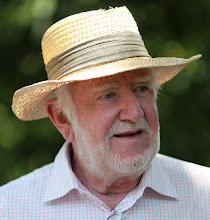The Second Order Draft of the IPCC's Fifth Assessment Report has now been published (http://bishophill.squarespace.com/blog/2012/12/13/ar5-second-order-draft-leaked.html).
There is definitely something missing. The IPCC is supposed to assess the latest peer-reviewed literature and provide a reasoned and balanced review of any differences of opinion. In the Fourth Assessment, they made much of a prediction that the temperature in the upper troposphere (around 10-12km above the surface) would rise faster than the surface. Indeed, their models suggested the upper troposphere between about 30 deg N and 30 deg S could warm as much as 0.6 deg C per decade.
However, we have been flying weather balloons with thermometers into this region for over 60 years. The measurements show no such warming. The temperature can also be inferred from some satellite records, extending about 30 years back. These inferred measurements show slight warming, but nothing like 0.6 deg C per decade (and there is also quite a debate about the reliability of the models used to infer temperatures from satellite data).
So all the experimental evidence is against the IPCC's models. This is particularly surprising, because the physical reasons for a more rapid warming seem sound.
I would have expected the IPCC to consider this problem in depth. There are recent publications drawing attention to the problem. For instance, Singer, S Fred, (2011). "Lack of Consistency Between Modeled and Observed Temperature Trends," Energy & Environment, 22, 375-406 stressed the fact that "The US Climate Change Science Program [CCSP, 2006] reported, and Douglass et al. [2007] and NIPCC [2008] confirmed, a 'potentially serious inconsistency' between modeled and observed trends in tropical surface and tropospheric temperatures." He noted further that "Santer's key graph --- misleadingly suggests an overlap between observations and modeled trends. His 'new observational estimates' conflict with satellite data. His modeled trends are an artifact, merely reflecting chaotic and structural model uncertainties that had been overlooked. Thus the conclusion of 'consistency' is not supportable and accordingly does not validate model-derived projections of dangerous anthropogenic global warming."
Similarly Douglass, D. H., Christy, J. R., Pearson, B. D. and Singer, S. F. (2008), "A comparison of tropical temperature trends with model predictions". Int. J. Climatol., 28: 1693–1701 noted "Model results and observed temperature trends are in disagreement in most of the tropical troposphere, being separated by more than twice the uncertainty of the model mean."
Neither of these critical references are quoted in the Second Order Draft. Section 2.4.4.2 starting on page 36 of the Draft considers 'Intercomparisons of Various Long-Term Radiosonde and MSU Products.' It concludes that "the differences among the data sets, all of which are uncertain, means there can only be low confidence in the details of the upper air temperature trends." In other words, because there are differences in the data, the discrepancy with the model predictions can be ignored.
This is not science as I know it. The models represent a theory. In my science, observations in conflict with the model show that the model is wrong and must be abandoned. Here, the observations are being questioned and the model is assumed to be right.
In a nutshell, at its present stage of development, the Second Order Draft is not to be trusted. The politicians of this world seem far wiser than normal, in refusing to believe the IPCC's so-called "scientific assessment." These COP bun-fights, such as that just concluded in Doha, are clearly going nowhere while the advisers to the process (namely the IPCC) miss the absolute need to provide unbiased assessments.


